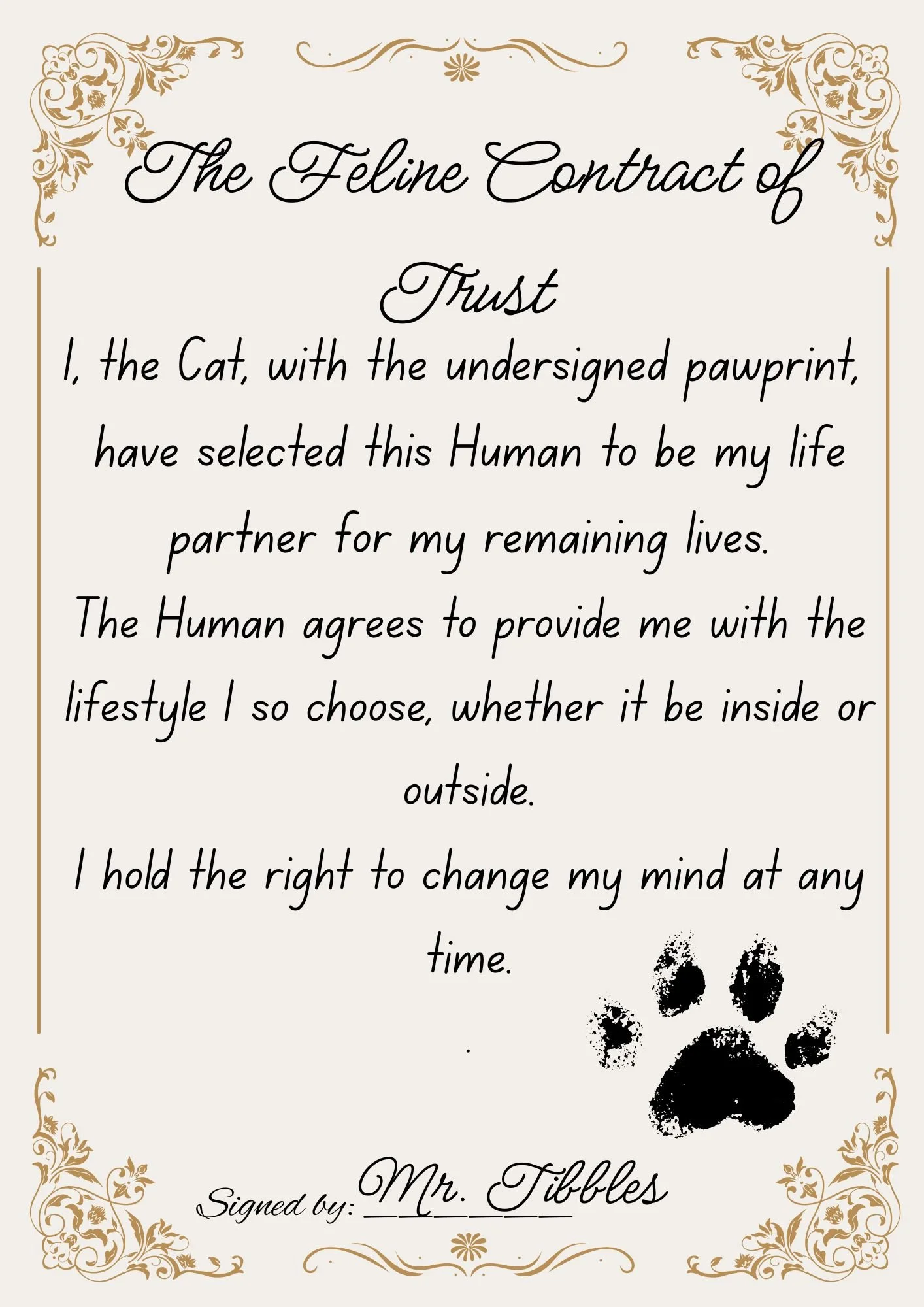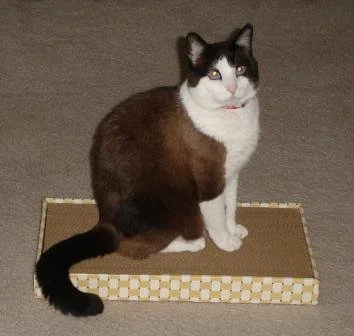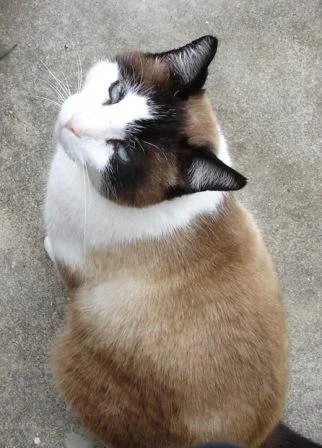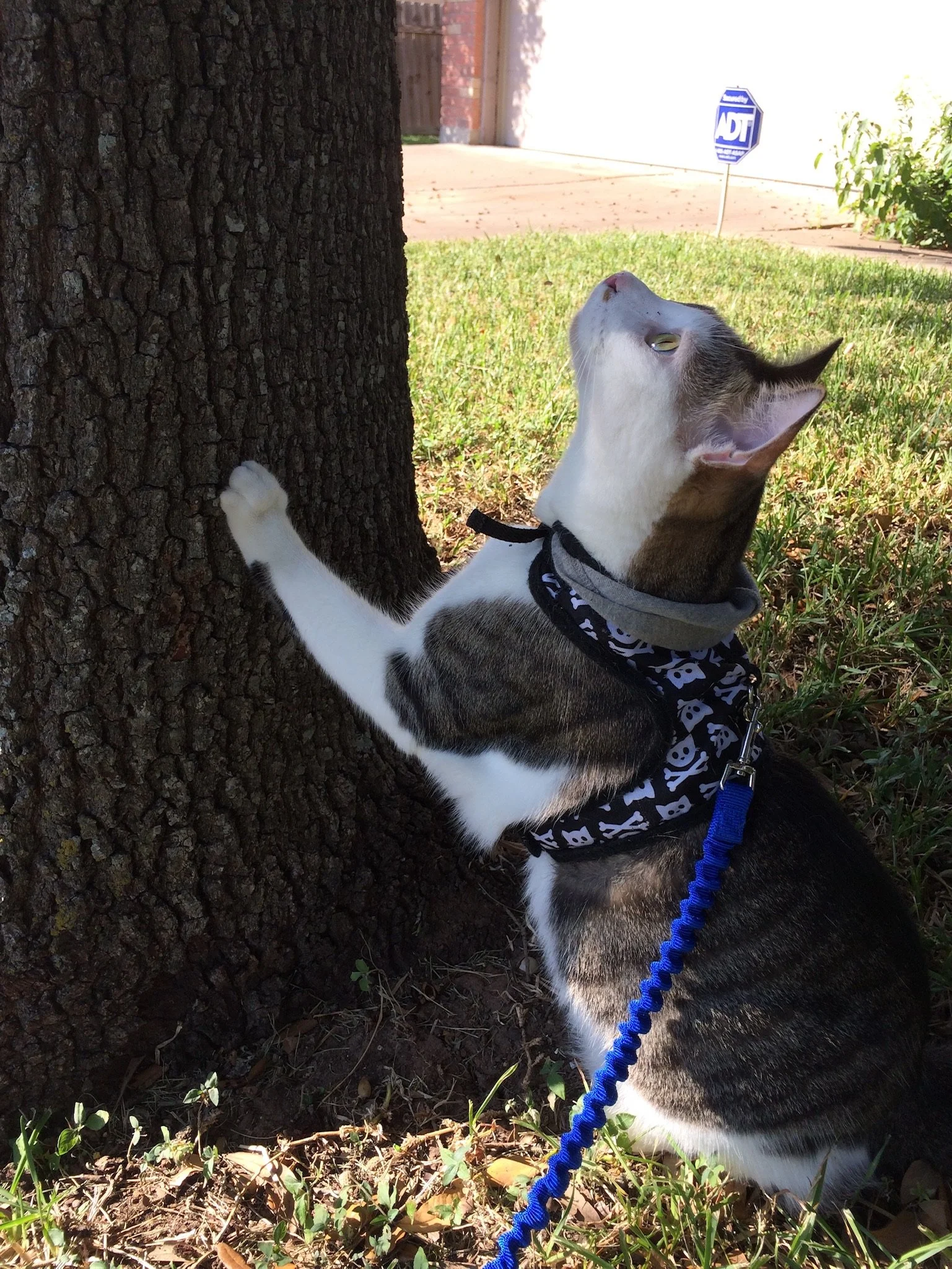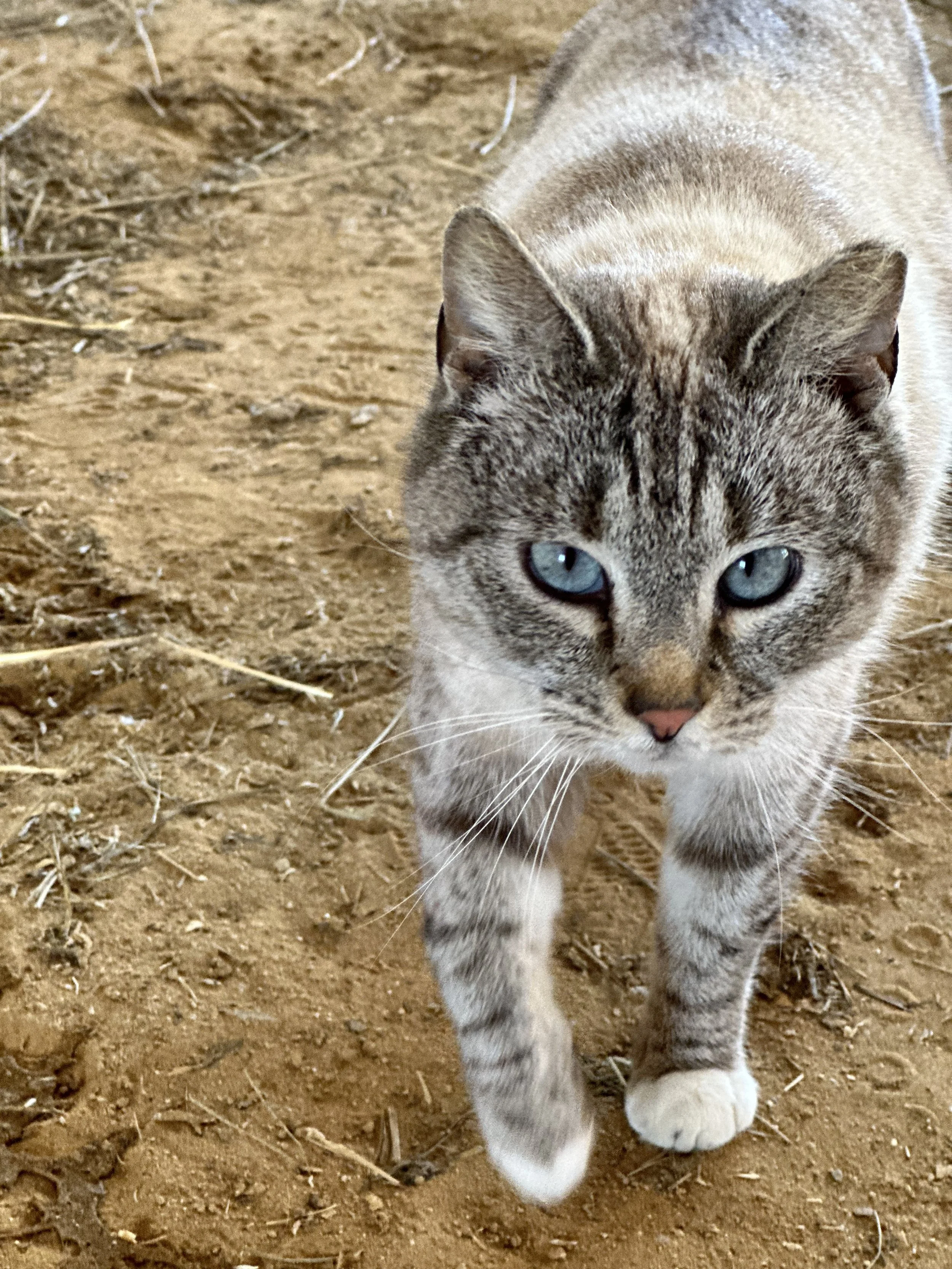Is My Cat a Prisoner? An Indoor vs Outdoor Manifesto
Would you come between a Snowshoe and his snake?
Indoor vs Outdoor Cat Lifestyle: Who Really Decides?
You’re ready to adopt a cat. You’ve fallen in love online, and you’re set to bring them home.
Then comes the paperwork avalanche: your address, job history, personal references. (Really? Aren’t there a billion rescue cats desperate for homes?)
And the final roadblock to your happily-furever-after: will your cat be indoors or outdoors? Before you leave, you’re asked to swear it in writing. In blood.
“Excessive Adoption Form Questions? They asked for my employer contact, multiple references, even who keeps the cat if a relationship ends. It’s insane.”
— r/CatAdvice
Across Reddit in 2025, would-be adopters complain about feeling interrogated. And always, a hard line on “indoor-only.”
Other applicants report being flat-out rejected because their existing cat is allowed outdoors, or because a rescue feared the new cat might slip outside someday. Nathan Winograd, a critic of rigid shelter practices, describes adopters turned away for wanting outdoor access, arguing these rules can backfire and leave cats unadopted when they could have thrived (Winograd, Good Homes Need Not Apply).
Did you sign your paperwork?
The Indoor vs. Outdoor Debate
Anyone who has lived with a cat knows that happy homes are a democracy. Not a dictatorship.
Your cat gets a say in everything, from the little things (toys, sleeping spots), to the big things (new roommates, especially canines, and anything remotely related to litterboxes). Access to the outdoors? That can be a dealbreaker for your cat.
You: indoor cats live longer. Anyway, I signed my name in blood.
Your cat: I’m a prisoner. Attica.
This gap between rules humans impose and choices cats make for themselves is at the heart of the indoor vs outdoor debate.
Indoor vs. outdoor isn’t just a checkbox on an adoption form. It’s a lifestyle. And cats rarely hold to one lifestyle for all nine lives. People move. Neighborhoods change, and cats either move with them or get rehomed.
A cat who was a confident prowler in the suburbs might become an unwilling prisoner in a high-rise apartment, or vice versa.
But Who Chooses My Cat’s Lifestyle?
The majority of rescue cats didn’t start life lounging on the sofa. They were born feral, found as strays, or surrendered after spending time outdoors. Their origin stories start in alleys and backyards. Some of them get pretty insulted when humans suggest they’re incapable of recognizing and facing danger.
According to a 2021 survey by Foreman-Worsley and colleagues, 63% of U.S. cats are now kept entirely indoors. But that number shifts depending on geography and housing.
Sure, if you buy from a breeder, you’re likely adopting a cat raised as an indoor-only pet. But rescues often carry an outdoor history with them, whether you acknowledge it or not. And those cats, once experts in protecting themselves, believe they should be consulted about staying in or being let out.
My mom had a Snowshoe named TK. My mom walked into a groomer’s office and found a caramel and white dreamboat with dark chocolate ears, tail, and eyeliner. Poor kitty was in a kennel.
(Some cat hater had hung bird feeders in his yard and then trapped and dumped any number of cats who came to browse. The groomer had made a deal with the dumper: I’ll take every cat you trap. Save yourself the trip to the dump.)
My mom was toast when he batted his aquamarine eyes and reached out to her with one white paw through the bars of the kennel. TK (“That Kitty”) had strong opinions about going outside. That’s where he came from, and he had business to attend to: birds to browse, hearts to seduce.
A rescue who once roamed may still yearn for the door; a kitten raised indoors may never show interest in stepping outside. Even with over half of North American cats reported as indoor-only, most have outdoor origin stories and/or outdoor aspirations. When those aspirations are blocked. . .
Sure, I’ll be an indoor cat. You weren’t overly attached to those curtains, were you?
The Captivity: Is My Cat a Prisoner?
Some years later, TK came to live with me across town. I kept him inside, although it wasn’t easy.
No one was allowed in through the front door (he bolted). I had to insist that everyone enter the house through the garage and the laundry room, where there were two doors that served as a decompression chamber so you could declare yourself cat free. Absolutely no escapes.
Dark chocolate fur:
A real thing.
Poor TK. He went to a deep, dark place. He cried at windows and hummed himself to sleep with Elvis’s I Want to Be Free. His fur turned from light caramel to 80% dark chocolate. (This is a real thing, btw – quirk of the Siamese temperature-sensitive gene. Being an indoor cat in an air-conditioned house made TK’s back go as dark as his ears and tail.)
Then he stopped using the litterbox.
What would you have done? Maybe you’re a stronger person than I am, but I relented. One day I let him out in the backyard to help me with some gardening. Eighty-seven seconds later, TK hurdled the six-foot wooden fence, and I didn’t see him again for 12 hours.
It isn’t always easy to decide what’s safest or fairest. But if you’re asking yourself, “is my cat a prisoner?” you’re already on the right track. (Spoiler: you’re on the right track every time you assess things from your cat’s perspective.)
After TK’s jailbreak, we started negotiations. My mistake had been disregarding the Cat Redistribution System.
The Cat Redistribution System: The Cat Chooses the Human.
A stray wanders into your yard, your lap, your heart. It’s the cosmic matchmaking side of shelters, rescues, fosters, and neighborhood rehomers. AKA: where your new cat auditions you for the role of their nine lifetimes. Or however many they have left.
The system is where the indoor vs. outdoor lifestyle contract often gets written. Here’s the thing, though.
In your cat’s opinion, what you promised the shelter or the Nextdoor lady isn’t relevant. All that matters
TK chose my mother. When she moved, he got me. And I declared all prior contracts null and void.
The Captivity: Is My Cat a Prisoner?
I wanted the “best” lifestyle for TK. I wanted him to be safe. To not seduce so many people who might mistake this poor blue-eyed, charming waif masquerading as homeless. To stay out of the street. To stay away from Fight Club! (More on that later.)
The return of TK’s caramel highlights.
Sure, TK had loved being an indoor-outdoor cat when he lived with my mom. But indoor vs outdoor cat isn’t a fixed identity. It’s just how the cat lives at that particular chapter in their life.
Her neighborhood didn’t have all the dangers mine did. But was it right to sacrifice TK’s happiness to extend his life? What about the quality of that life?
A Cat’s Life Expectancy vs Life Worth Living
In 1970s London, Robert Tabor shadowed the “Barnet cats” and reported that outdoor cats often met rough ends from cars or disease, while the housecats down the road settled into quieter lives indoors (Tabor, The Wild Life of the Domestic Cat, 1983). But was that a better life, or just safer? We don’t know, because Tabor didn’t ask the cats.
Of course, that was a study done in England, where cats don’t face the same dangers as North American cats do. It was also done in the 1970s. (I have a few theories about how different cultures have different attitudes toward cats, and how attitudes towards cats have changed over time, but those are separate articles.)
I’m fairly certain that some of these cats were totally satisfied with their lifestyle choices. And some dreamed of grass greener on the other side.
Where a cat lives and how it matters
In the U.S., a 30-year UC Davis necropsy review (Kent et al., 2022) compared the indoor vs outdoor cat lifestyle and found that indoor-only cats and indoor–outdoor cats lived to about the same age, while outdoor-only cats bowed out a couple of years earlier. About one-third of cats in the study were kept strictly indoors, another third split time between house and yard, and only ~7% lived as full-time outdoor cats.
Median ages at death? Around 9.4 years for indoor-only cats, 9.8 for indoor–outdoor cats, and just 7.3 for outdoor-only cats.
What don’t these numbers tell us? Did the cats feel like they were raging against the walls in solitary confinement? Or did they feel fulfilled, safe by the fire, drinking the warm milk?
Where you live shapes your cat’s lifestyle
Wherever you live, predators change the game. I live in Texas. Coyotes are a clear and present danger. I couldn’t find any Texas-specific stats, but in Chicago, scientists checked coyote poop and found cat in 13% of samples.
Cat owners look at those numbers and see unacceptable risks. It’s truly horrifying. Makes me want to play my Run, Coytoe Run CD of mountain lions roaring from my deck 24 hours a day. (Yes, it works.).
Cats assess risk in different ways. For one cat it’s “Humans overreacting all the time as usual.” For another cat it’s pure terror. The thing is, any cat can change their mind ALL THE TIME.
My current cat Charlie looks at me and shrugs when I tell him to be careful. But sometimes he refuses to go out at all. I always trust him. And he has a strict curfew. To Charlie (and TK before him), indoor life is the torture of sensory deprivation.
But I’ve also rescued battle-scarred street cats who saw me as their chance to hang up their spurs and set up a cushy retirement. They campaigned relentlessly to live out their golden years as lap cats, safe indoors. A windowsill and a sunny spot was enough of the outside world for them.
Fight Club
After TK went over the fence that day, and he stayed out until late that night. I walked the neighborhood, begging him to come home, or to at the very least, stop ignoring me. How was I going to explain his jailbreak to my mother? She was always on TK’s side. She believed that cats should be able to go in and out if they want to.
Have you seen TK?
He finally sauntered back just before midnight. En déshabillé. Utterly shameless about the long red scratch running from the “M” in his forehead to the tip of his nose. I was there all day. I heard nothing, and those houses were on tiny lots. He found a fight in someone’s territory blocks away.
The next year was an emotional roller coaster. Trying to keep him inside. Having him disappear for days when my brothers or my parents would visit and then open the back door to make a point. TK’s coat turned a pale toasted caramel seemingly overnight. He’d come home with scratches, punctures, and abscesses. He’d let me clean him up, though, which was generous.
It must have been unpleasant to sit on the kitchen counter and have his wounds cleaned while listening to me lecture him. The first rule of Cat Fight Club? Don’t talk about Cat Fight Club. So he’d purr through the treatment and the yelling. He'd swear he’d quit. Until the next full moon.
If you’re wondering where my mother was in all this: she wouldn’t hear a word against him. Fights? I was exaggerating, her boy would never. Keep him in? Was I cruel? TK was the cat who walked by himself. He’d be bored sleeping by the fire night after night.
Nine Lives on the Line
But TK’s night life was dangerous. Not just for him, for all the other cats. Outdoor cats aren’t overfond of sharing resources (access to anything worth having: food, shelter, and mates), so there’s fighting. Sure, there are cats who stay above or below the fray. TK wasn’t one of them.
Fights are no joke, especially with unneutered males. Fight Club members can die. Bites and scratches can lead to abscesses and bad infections that are lethal if left untreated. If you have an outdoor cat, get your cat fixed. And all the shots!
TK had an overwhelming instinct to fight. Everything inside him told him that he needed to fight. For him, there was never a choice. It was wrong for me to ask him to ignore this ancient urge, to hold him to promises he couldn’t keep. You can’t change who cats are. You have to work with the cat you have.
Catios and Leashes: Awesome Enrichment? Or Helicopter Parenting?
A 2021 study by de Assis and Mills found that cats with access to controlled outdoor spaces like catios, enclosed yards, and supervised walks tended to show more positive welfare indicators than cats kept strictly indoors. Owners reported fewer stress behaviors, like inappropriate scratching or hiding.
Frankie plans his ascent like it’s his Everest.
When I hear a client ask about “enrichment,” I cheer “YES! So much YES!” Enrichment means you’re compromising with your cat.
Compromise is the safety valve that keeps certain cats from spiraling without an outlet. TK was hardwired for chaos, alley brawls, and midnight patrols. Keeping him shut inside without a way to channel his instincts made him spiral into stress and a depression so deep his fur turned black.
For cats like TK, enrichment isn’t cute. It’s essential.
A catio, a harness walk, daily hunt-style play, puzzle feeders, vertical climbing gyms: they’re not luxuries. They’re the opening negotiation to a lifetime of peace and happiness with a fulfilled and satisfied cat who is most importantly safe from harm.
This barn cat doesn’t have to share her hay.
Farm Cats and Feral Colonies
Not every cat lives by human design. Farm cats and feral colonies carve out their own lifestyles. On a farm, the barn cat is CEO of rodent control, a role as old as agriculture. For ferals, confinement indoors would be a worse prison than open air, even if it shortens their lives.
Owner’s choice or cat’s choice? Out here, it’s clearly the cat’s.
For the feral colony, freedom is non-negotiable. The barn cat has a sweet setup with both shelter AND mice.
These cats sign no contracts. They enforce their own.
Bottom Line
So is your cat a prisoner? Honestly: your cat has the answer. The indoor vs outdoor cat lifestyle question isn’t just about rules and ethics. You have to take a long, realistic look at your environment, and who your cat is. Given their past history and nature, how do you keep them safe, sane, alive, and happy?
That may mean indoor-only. It may mean outdoor access with guardrails. What it should never mean is ignoring the risks. But try not to judge your indoor-outdoor cat neighbors too harshly. Every home is different.
Your cat chose you to pay the rent and keep them in luxury while they chase the bad dreams away. But you’re also your cat’s guardian. If you do your job right, you get to make sure your cat never steps into the ring at Fight Club.
Have you ever struggled with being a “prisoner or protector”?


